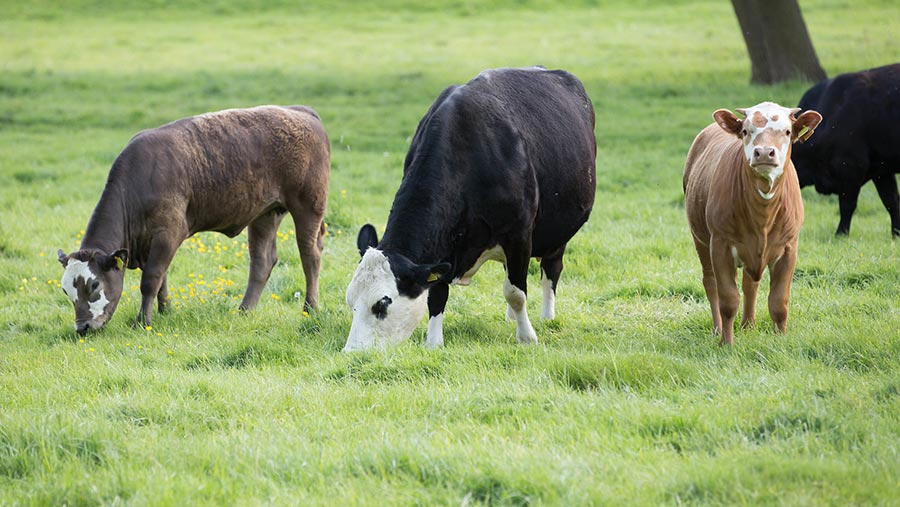English cattle numbers up despite breeding herd decline
 © Tim Scrivener
© Tim Scrivener The size of the national cattle herd has grown in England, up by 36,300 in a year, boosted by more dairy and beef youngstock and male cattle.
The 0.7% increase in the year to 1 June 2022 put the total number of cattle and calves at 5.1m, according to Defra figures.
AHDB trainee analyst Charlotte Forkes-Rees said there were gains in female youngstock – both dairy and beef – with animals aged between one and two years old up 3.9% (30,000 head) and a 2.1% (19,000 head) increase in those aged less than a year.
See also: Q&A: Pneumonia in calves and how to combat it
The latest data from the British Cattle Movement Service also show that the overall increase in youngstock numbers in Great Britain has continued – in July, they totalled 941,000 head, up 3.4% (31,000 head) on July 2021.
Although the milking herd has been in long-term decline, the increase in youngstock could help stabilise numbers as they start to move up through the herd, said Ms Forkes-Rees.
“Conversely, given the financial pressures farmers are under, we could instead see additional destocking, either as an overall contraction to ease financial burdens or to make room for youngstock moving up.
“Based on cull cow numbers, this does not appear to have happened to date. However, it will be a point of discussion with industry at this week’s milk forecasting forum.”
The Defra census showed that numbers of male cattle in England increased 1.7%, by 23,600 head, with those aged between one and two years old and two years plus up 4.3% (22,000 head) and 3.2% (5,000 head), respectively.
But while numbers are up overall, there has been contraction in many classes.
The largest fall in numbers in England was in female cattle over two years old – the breeding herd stood at 1.7 million head, 1.3% down on the previous year.
The beef breeding herd also shrank by 2.2% or 14,500 head, to 650,800. The dairy breeding herd fell by 0.7% or 8,200 head, to 1.1 million.
“The beef breeding herd equated for just over one-third (37%) of the overall breeding herd, marginally lower than 2021,” Ms Forkes-Rees observed.
In England, numbers of male cattle aged less than a year old fell 0.5% to 680,500 head, while GB-wide there was a 1.7% fall, 3,800 head, in the number of calves aged 0-6 months compared to June 2021.
“Additionally in GB, there was a slight quarter-on-quarter decline in the number of nought to two year olds – the first since January 2020,” said Ms Forkes-Rees.
The largest decline in number was in the four to six-year-old group, back by 2.6% or 13,100 head.
